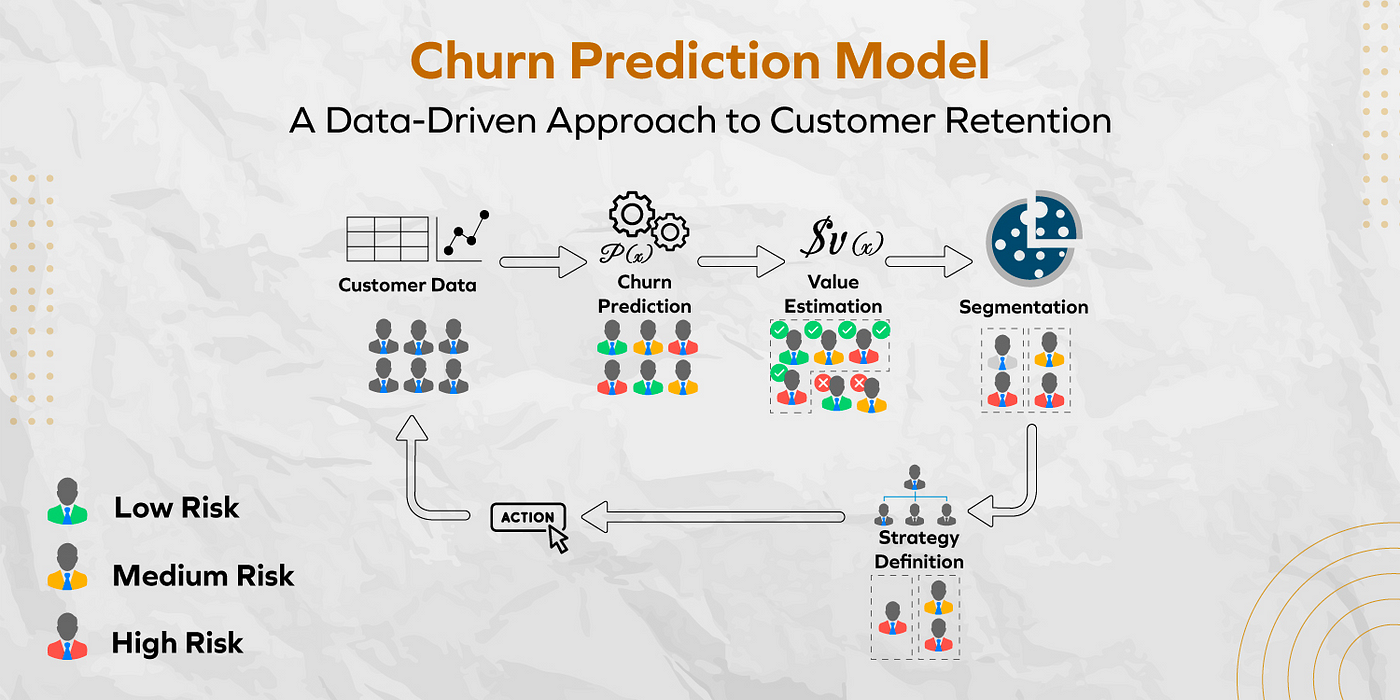
Proactive Churn Analysis and Prediction: Enhancing Customer Retention with Machine Learning
- Author: Nishant Pathak
- Published On: 9/07/2024
- Category: Research
In today's competitive landscape, customer retention is crucial for sustained business growth. Proactive churn analysis and prediction empower businesses like Kursaha to anticipate and mitigate customer attrition before it occurs. By leveraging advanced machine learning (ML) algorithms, businesses can identify patterns and indicators that signal potential churn, allowing for targeted retention strategies.
Understanding Churn Prediction
Churn prediction involves forecasting which customers are likely to discontinue their relationship with a service or product. By analyzing historical data and customer behavior, businesses can uncover insights that help predict churn with accuracy. This proactive approach enables companies to take preemptive actions to retain customers, thereby reducing churn rates and increasing profitability.

Churn Prediction model
- Customer Data Collection: Gather information about your customers, such as their demographics, purchase history, interactions with your products/services, etc.
- Churn Prediction: Use the customer data to predict which customers are likely to leave or "churn" from your business. This involves analyzing patterns in past customer behavior that indicate potential churn risks.
- Value Estimation: Determine the value or importance of each customer to your business. This can be based on factors like their purchasing frequency, total spending, referrals they generate, etc.
- Segmentation: Divide your customer base into different segments or groups based on similarities in behavior, preferences, demographics, etc. This helps in targeting specific groups with personalized strategies.
- Strategy Definition: Develop strategies tailored to each customer segment identified. These strategies could include retention tactics for at-risk customers, upselling/cross-selling opportunities for high-value customers, improving engagement for low-activity customers, etc.
- Action: Implement the strategies defined in the previous step. This could involve sending targeted marketing campaigns, offering personalized discounts or incentives, improving customer service based on feedback, etc.
Machine Learning Algorithms for Churn Prediction
- Logistic Regression:This classic algorithm is widely used for binary classification tasks, making it suitable for predicting churn (churn vs. non-churn) based on customer attributes and behavior data.
- Random Forest: Known for its ability to handle complex datasets and capture non-linear relationships, Random Forests excel in churn prediction by aggregating predictions from multiple decision trees.
- Gradient Boosting Machines (GBM): Algorithms like XGBoost and LightGBM are popular choices for churn analysis due to their efficiency in handling large-scale data and optimizing predictive performance.
- Neural Networks: Deep learning models can uncover intricate patterns in customer data, enhancing churn prediction accuracy by capturing subtle interactions between various factors influencing churn.
- Support Vector Machines (SVM): SVMs are effective in identifying separable patterns in data, making them useful for churn prediction tasks where the decision boundary between churners and non-churners needs to be clearly defined.

Get your FREE Marketing Automation Cheat Sheet!
Unlock the power of marketing automation with our comprehensive cheat sheet, designed to streamline your marketing efforts and drive results.
Steps in Implementing Proactive Churn Analysis
- Data Collection and Preprocessing: Gather relevant customer data including demographics, transaction history, usage patterns, and customer interactions.
- Feature Engineering: Extract meaningful features from raw data that can serve as predictive indicators of churn, such as frequency of usage, customer satisfaction scores, or recent interactions.
- Model Training and Validation: Train machine learning models using historical data, validate their performance using techniques like cross-validation, and fine-tune hyperparameters to optimize predictive accuracy.
- Prediction and Actionable Insights: Deploy the trained model to predict churn for current customers. Use these insights to segment customers based on churn risk and tailor retention strategies accordingly.
Business Benefits of Proactive Churn Analysis
- Improved Customer Retention: By anticipating churn early, businesses can implement proactive retention strategies, such as personalized offers or targeted communication, to enhance customer loyalty.
- Cost Efficiency: Reducing churn can lead to significant cost savings compared to acquiring new customers, making proactive churn analysis a cost-effective strategy for sustainable growth.
- Enhanced Customer Experience: By understanding customer behavior patterns, businesses can address underlying issues that contribute to churn, thereby improving overall customer satisfaction.
Conclusion
Incorporating proactive churn analysis and prediction using machine learning algorithms empowers businesses like Kursaha to stay ahead of customer attrition. By leveraging data-driven insights, businesses can foster stronger customer relationships, drive profitability, and achieve sustainable growth in competitive markets.
Implementing these strategies not only enhances operational efficiency but also strengthens Kursaha's position as a customer-centric organization committed to delivering value and retaining customers effectively.


